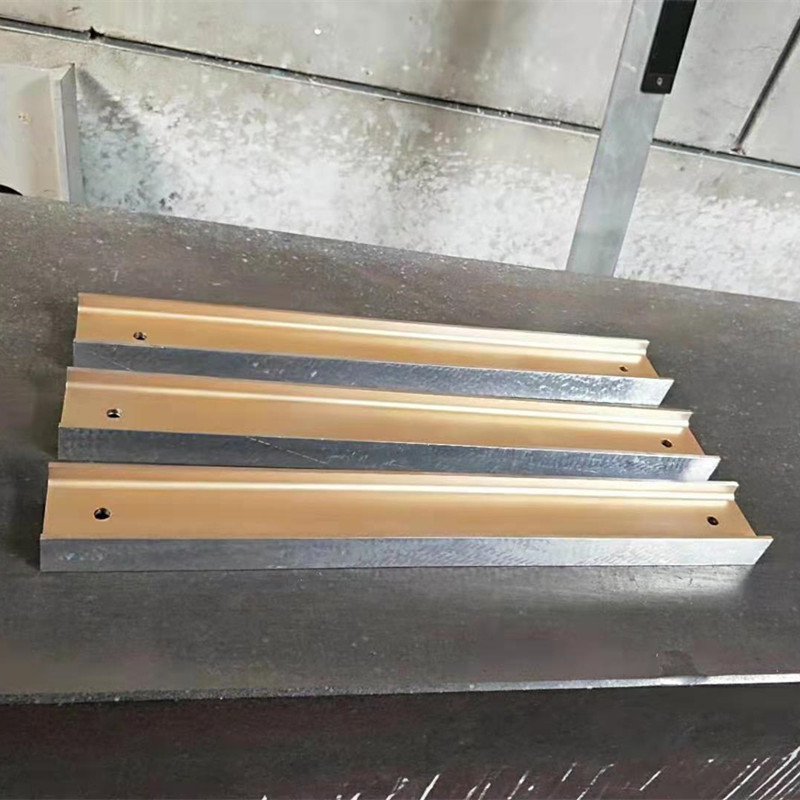نومبر . 29, 2024 10:27 Back to list
Types of Linear Guide Rails and Their Applications in Precision Machinery
Understanding Linear Guide Rail Types
Linear guide rails are fundamental components in the field of automation and machinery, providing stability and precision for moving parts. They are widely used in various applications, from CNC machines to robotics, and their selection is crucial for ensuring optimal performance and reliability. This article explores the different types of linear guide rails, their characteristics, applications, and factors to consider when choosing the right one for your project.
Types of Linear Guide Rails
1. Ball Linear Guides Ball linear guides are among the most common types of linear bearings. They consist of two parallel rails and a carriage equipped with balls that allow smooth motion. This design offers low friction and high load capacity, making it ideal for high-speed applications. The ball recirculation mechanism provides a constant load distribution, which enhances the service life of the guides. They are commonly used in CNC machinery, 3D printers, and automated assembly lines.
2. Roller Linear Guides Roller linear guides operate similarly to ball guides but utilize cylindrical rollers instead of balls. This type allows for higher load capacities and rigidity, making them suitable for heavy-duty applications. The contact area between the rollers and the rail improves load distribution and minimizes wear. Roller guides are typically used in applications requiring greater stiffness, such as industrial machinery and heavy equipment.
3. Magnetic Linear Guides Magnetic linear guides utilize magnetic levitation technology to achieve frictionless movement. These guides eliminate physical contact between moving parts, reducing wear and increasing lifespan. They are ideal for cleanroom environments or applications where traditional lubrication is undesirable. Although they can be more expensive, their maintenance-free operation and high precision make them an attractive option in sectors such as semiconductor manufacturing and high-speed transportation systems.
4. Profile Rail Guides Profile rail guides feature a robust design that is often used in applications that require high accuracy and rigidity. They consist of precision-ground rails and a carriage that can accommodate ball recirculation or roller systems. Profile rail guides can handle higher moments and loads compared to conventional linear bearings, making them suitable for machining centers, packaging machinery, and robotics.
5. Pneumatic Linear Guides These guides use pneumatic cylinders to facilitate linear motion. Pneumatic linear guides can achieve high speeds and are typically employed in applications where rapid movements are required. They are lightweight and can be easily integrated into automated systems. However, they may require a more complex control system and are subject to pressure fluctuations that can affect performance.
linear guide rail types

Choosing the Right Linear Guide
When selecting a linear guide rail, several factors should be considered to ensure compatibility with your application
- Load Capacity Evaluate the expected load during operation. Choosing a guide with the appropriate load capacity is crucial to maintaining performance and extending the lifespan of the system. - Speed Requirements Different guide types can handle varying speeds. For high-speed applications, ball linear guides may be more suitable, while roller guides might be better for heavy, slower moving parts.
- Precision and Tolerance Consider the required accuracy for your application. Profile rail guides typically offer higher precision, making them ideal for applications with stringent tolerance requirements.
- Environmental Conditions Environmental factors such as temperature, humidity, and exposure to contaminants can impact the choice of linear guide. For instance, magnetic guides are excellent in cleanroom settings, while corrosion-resistant materials may be needed in harsh environments.
- Budget Cost is always a consideration. While some linear guides may offer superior performance, they may come at a premium price. Weigh the benefits against the cost to find the best value for your application.
Conclusion
Linear guide rails are critical components that enhance the precision and efficiency of various machinery and automation systems. Understanding the different types available and their respective advantages can help in making informed decisions to meet specific operational needs. Whether you require high speed, heavy load capacity, or exceptional precision, there is a linear guide rail type that can accommodate your requirements, ensuring the success of your project.
-
Why Metric Trapezoidal Thread is Ideal for Precision Motion ControlNewsAug.05,2025
-
The Unique Properties of a Block of Granite for Industrial UseNewsAug.05,2025
-
The Role of Flanged Y Strainers in Preventing Pipeline ClogsNewsAug.05,2025
-
The Importance of Regular Calibration for Master Ring GagesNewsAug.05,2025
-
How a Cast Iron Surface Table Enhances Accuracy in ManufacturingNewsAug.05,2025
-
Comparing Different Check Valve Types for Optimal Flow ControlNewsAug.05,2025
Related PRODUCTS









